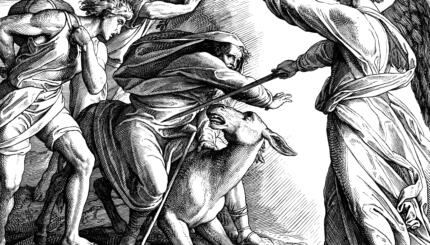Reprinted with permission from Biomedical Ethics and Jewish Law, published by KTAV.
The twelfth‑century code of Maimonides treats our subject matter [of euthanasia] as follows:
"One who is in a dying condition is regarded as a living person in all respects. It is not permitted to bind his jaws, to stop up the organs of the lower extremities, or to place metallic or cooling vessels upon his navel in order to prevent swelling. He is not to be rubbed or washed, nor is sand or salt to be put upon him until he expires. He who touches him is guilty of shedding blood. To what may he be compared? To a flickering flame, which is extinguished as soon as one touches it. Whoever closes the eyes of the dying while the soul is about to depart is shedding blood. One should wait a while; perhaps he is only in a swoon."
Thus, we note the prohibition of doing anything that might hasten death. Maimonides does not specifically forbid moving such a patient, as does the Talmud, but such a prohibition is implied in Maimonides’ text. Maimonides also forbids rubbing and washing a dying person, acts which are not mentioned in the Talmud.
Finally, Maimonides raises the problem of the recognition of death, a problem becoming more pronounced as scientific medicine improves the methods for supporting respiration and heart function.
The sixteenth‑century code of Rabbi Joseph Karo devotes an entire chapter to the laws of the dying patient. The individual in whom death is imminent is referred to as a goses. Karo’s code begins, as do Maimonides and the Talmud, with the phrase "A goses is considered as a living person in all respects," and then Karo enumerates various acts that are prohibited.
All the commentaries use the concept "lest they hasten the patient’s death" to explain these prohibitions. One of the forbidden acts not mentioned by Maimonides or the Talmud is the removal of the pillow from beneath the patient’s head. This act had already been prohibited two centuries earlier [than Karo] by Rabbi Jacob ben Asher, known as Tur.
Karo’s text is nearly identical to that of Tur. The latter, however, has the additional general explanation: "the rule in this matter is that any act performed in relation to death should not be carried out until the soul has departed." Thus, not only are physical acts on the patient, such as those described above, forbidden, but one should also not provide a coffin or prepare a grave or make other funeral or related arrangements lest the patient hear of this and his death be hastened. Even psychological stress is prohibited.
On the other hand, thirteenth‑century Rabbi Judah ben Samuel the Pious states: "if a person is dying and someone near his house is chopping wood, so that the soul cannot depart, then one should remove the [wood] chopper from there."
Based on this ruling, Rabbi Moses Isserles, known as Rema, in his famous gloss on Karo’s code, asserts:
"…if there is anything which causes a hindrance to the departure of the soul, such as the presence near the patient’s house of a knocking noise, such as wood chopping, or if there is salt on the patient’s tongue, and these hinder the soul’s departure, it is permissible to remove them from there because there is no act involved in this at all but only the removal of the impediment."
Furthermore, Rabbi Solomon Eger, in his commentary on Karo’s code, quotes another rabbinic authority, who states "it is forbidden to hinder the soul by the use of medicines." Other rabbinic authorities, however, disagree with the latter view.
Rabbi Joshua Boaz Baruch, known as Shiltei Gibborim, pleads for the abolition of the custom of those who remove the pillow from beneath the dying person’s head, following the popular belief that the bird feathers contained in the pillow prevent the soul from departing. He further states that Rabbi Nathan of Igra specifically permitted this act.
Talmud
Pronounced: TALL-mud, Origin: Hebrew, the set of teachings and commentaries on the Torah that form the basis for Jewish law. Comprised of the Mishnah and the Gemara, it contains the opinions of thousands of rabbis from different periods in Jewish history.


